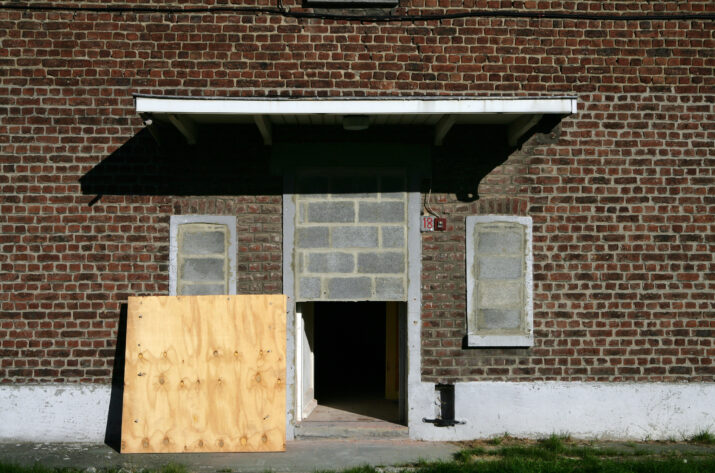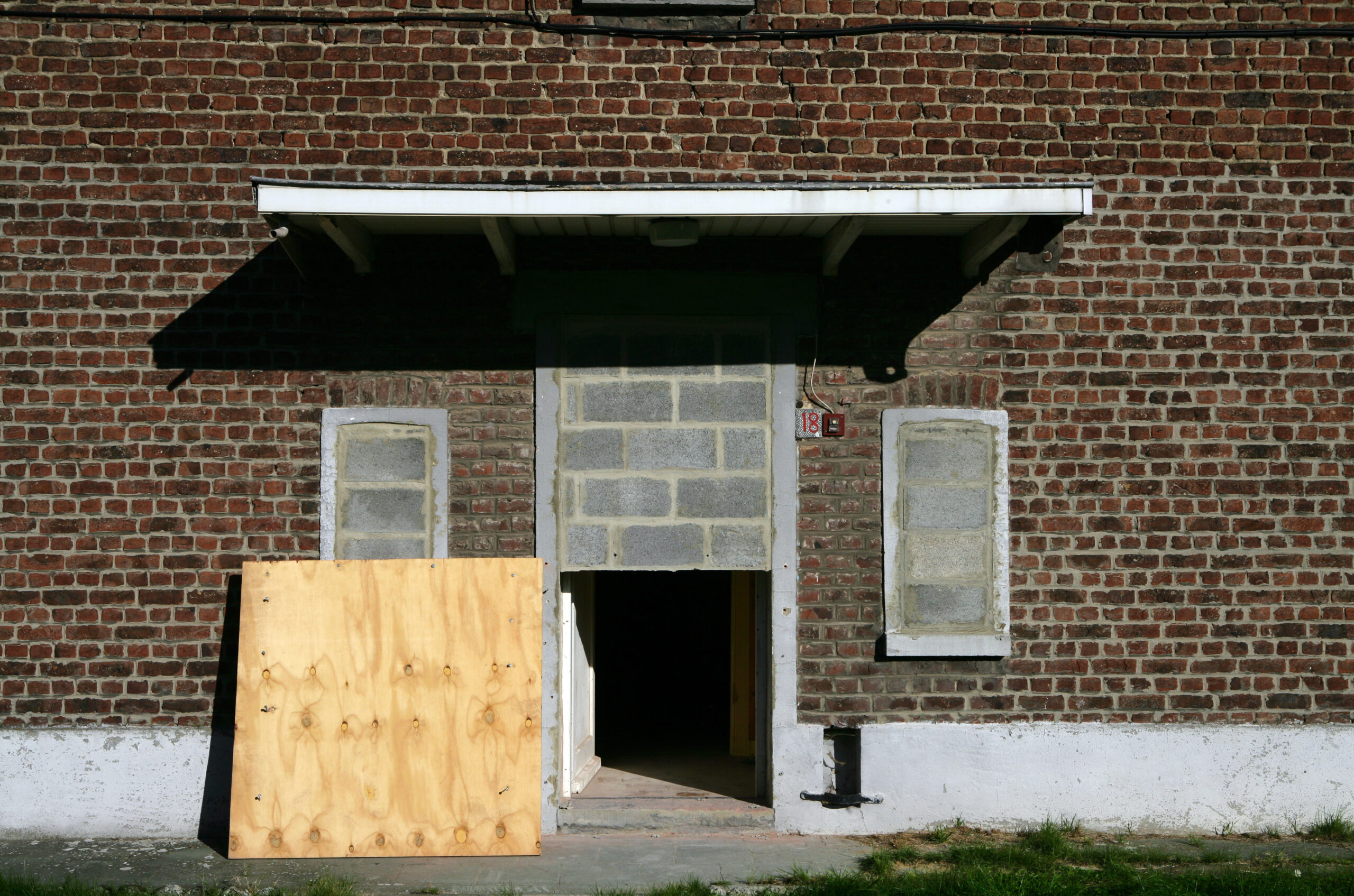

An introduction to our special feature, Homelessness and Poverty in Europe.
In 2015, Spain established its first comprehensive plan to reduce homelessness by 2020.[1] In 2017, French President Macron announced his intention to address the problem of homelessness, in particular among the migrant population.[2] In 2021, the incoming coalition government in Germany vowed to end homelessness in the country by 2030.[3] In the same year, the Danish parliament adopted a program to jointly tackle the shortage of affordable housing and homelessness with the aim of “abolish[ing] long-term homelessness entirely.”[4] And earlier this year, Prince William announced a five-year campaign to end long-term homelessness in the United Kingdom.[5] These pledges are just a sample of the political mobilization that has taken place in many European countries over the last decade around the crisis of homelessness, reflecting growing concerns about the plight of people affected by the intensifying shortage of affordable housing. Across Europe, the number of people living on the street or in group shelters has been on the rise. Among European states, one notable exception is Finland, where “more than a decade after the launch of the ‘Housing First’ policy, 80 percent of Finland’s homeless are doing well, still living in the housing they’d been provided with—but now paying the rent on their own.”[6] As the only country in the EU where a “zero homelessness” policy has succeeded, in spite of—or perhaps due to—a flexible and more realistic definition of homelessness that includes even people temporarily living with friends and relatives, Finland has much to teach the rest of Europe with its focus on “a combination of financial assistance, integrated and targeted support services and more supply” of housing.[7]
While policymakers rightly blame the COVID-19 epidemic, the war in Ukraine, and persistently high levels of inflation for the lack of progress in alleviating homelessness and for the dire shortage of safe and affordable housing in many places, these factors have exacerbated rather than created a complex problem that touches a wide array of people at different life stages and under various socio-economic conditions. In response to alarming statistics and mounting pressures from non-governmental organizations, the European Union launched the “European Platform on Combatting Homelessness” in 2021 in Lisbon. Through this instrument, the European Parliament, the Economic and Social Committee, the Committee of Regions, and various civil society partners agreed to work together to help eradicate rough sleeping caused by the lack of access to safe and appropriate housing, to guarantee that no-one is forced to live in temporary housing long-term, to ensure that every individual released from institutions such as prisons or hospitals is offered adequate housing, to prevent evictions or provide alternate housing in cases of eviction, and to protect people experiencing homelessness from discrimination.[8] These objectives provide a template for social policy action in EU member states; the European platform is envisaged as a collaborative tool, which “through supporting mutual learning for policy-makers and practitioners, will contribute to harness EU funding possibilities, strengthen evidence and monitoring on homelessness, disseminate and promote good practices, and review progress towards ending homelessness across the EU.”
It is in this general context that we have gathered in this special feature scholars, activists, artists, and teachers who work on different aspects of the crisis of homelessness in today’s Europe. Although not exhaustive, the contributions included here cover a range of approaches, from the central issue of housing inequality to the movement of people within the EU, the effects of the pandemic on homeless populations, the difficulty of making the topic salient in scholarly research, and the strategies used in the classroom to sensitize young people to the experiences of people affected by homelessness and devise possible solutions for creating a fairer and more inclusive Europe. After all, principle number 19 of the European Pillar of Social Rights proclaimed in 2017[9] explicitly urges attention to the need for “housing and assistance for the homeless”.
Issues of definitions: who is “homeless”?
One major difficulty in assessing, understanding, addressing, or researching homelessness lies in the complexity of the situations that may lead people to become socially marginalized and that makes the problems of definition and terminology thorny. Who is included in the “homeless” population and therefore considered in policymaking? The European Federation of National Organizations working with the Homeless (FEANTSA) proposes a typology of homelessness that identifies thirteen profiles regrouped into four general categories: roofless, houseless, living in insecure housing, and living in inadequate housing. This European Typology of Homelessness and Housing Exclusion, or ETHOS typology, was established in 2005 “as a means of improving understanding and measurement of homelessness in Europe, and to provide a common ‘language’ for transnational exchanges on homelessness.” The typology is used “as a framework for debate, for data collection purposes, for policy purposes, monitoring purposes, and in the media,”[10] rather than as a way to pigeonhole people into categories.
Whether roofless, ill-housed, unhoused, homeless, rough sleepers, unsheltered, living on the street, living in shelters, or living in unsanitary or overcrowded transient accommodations, people affected by homelessness, whether short-term, long-term, or intermittent, often fall victim to stereotypes and exclusion from basic services. Being labeled as “homeless” can become a self-fulfilling prophecy when people are caught in a vicious cycle of poverty, joblessness, and homelessness and come to face tremendous hurdles in finding safe and permanent housing. Hence, although official government texts and much scholarship, including in this feature, continue to use the terms “homeless people” or “the homeless,” increasingly advocates prefer the phrases “people affected by homelessness” or “people experiencing homelessness.” This shift in terminology aims to highlight that individuals are not defined merely by their lack of safe, permanent shelter, but that homelessness is rather a life situation that is mutable and changeable. By encouraging a different understanding of the condition, those seeking reform seek to trigger higher levels of engagement across society in the search for solutions. Indeed, many of these critics contend that expressions such as “the homeless” are anchored in moral judgement and that “houseless,” “unsheltered,” or “unhoused” more fully and accurately capture the spectrum of circumstances that people face due to the dearth of affordable housing. At the same time, some advocates, notably in the artistic community, have succeeded in transforming the term “homeless” from a pejorative and marginalized characteristic into a key facet of identity that is neither chosen nor shameful. Homelessness and its relative marginalization as a political issue indeed concerns all Europeans.
The role of NGOs and civil society in alleviating homelessness
Historically, many European states have been effective in building social safety nets, including in terms of affordable housing. These actions, while deserving of praise, have lamed current political debates about homelessness by papering over some of the specificity and new urgency of the problem. Hence, much mobilization has emerged outside the strict field of state policymaking. Indeed, when speaking about initiatives to eradicate homelessness, NGOs, such as caritative associations, and other civil society partners are crucial, as they provide immediate and urgent assistance to people affected by homelessness. Moreover, they rely on networks of localized and engaged volunteers who, for example, may watch for rough sleepers on particularly cold winter nights and arrange for them to seek warm shelter, cook and serve meals at soup kitchens, collect clothing and other necessities, and so much more. Besides providing material services on the front lines, these organizations also fulfill the role of advocating for the homeless population, pushing the political class to pay attention to the rising numbers of people affected by the shortage of affordable housing. For example, in Switzerland, a country where homelessness might seem to be a foreign concept, charities have played a key role in bringing the issue to the media.[11] In the UK, our interview with Paul Ryan of Café Art provides an example of the work done by charity organizations there. Ryan’s project is especially innovative in that it seeks to enable people affected by homelessness to earn an income from their creative photographic work, as well as helping them to regain dignity and feel empowered: the participants in the MyLondon calendar become artists who happen to be homeless, rather than being stereotyped as simply “homeless.” Through the production and sale of a calendar, Café Art also seeks to build bridges between the homeless population and society at large, encouraging a greater understanding and empathy through communication.
Another important strategy for enhancing public awareness about homelessness as a European problem develops in the classroom. Katalin Ámon writes about her role and experience teaching about homelessness to higher education students in Hungary, where she describes the experience of homeless people as particularly difficult in the current socio-political context. Ámon shares her strategy in building partnerships that bring together students, homeless people, and social care providers. Through her teaching, she shows how differently designed modules that include experiential pedagogical stratagems such as role-playing, co-teaching, participation, and self-reflection have positively impacted the communities at stake while also enhancing students’ awareness and learning. While she points to the lack of “methodological guidance, institutional pathways, and resources to include people experiencing homelessness or other forms of social exclusion as partnered participants, experts, and co-teachers, rather than as subjects,” her work with students is inspiring and sparks cautious optimism that the generations now coming of age will be prepared to think about homelessness beyond common stereotypes and condemnation and will not look away.
Another way to promote social dialogue about homelessness is through the arts and literature, which, by targeting our emotions and appealing to our common humanity, serve to summon the public’s attention. We feature here an excerpt from The Illiterate by Ágota Kristóf (translated by Nina Bogin), a book that portrays the arrival in Switzerland of escapees from Hungary in 1956. Although historical in nature, this memoir is useful to give a glimpse of the experiences of refugees in today’s Europe. In Exclusion, Isolation, Loneliness, our visual selection brings together three “artivists” who have been dedicated to highlighting homelessness and activating viewers’ awareness. While Layla Aerts gives us some direct and unfiltered impressions of what poverty looks like in Belgium, Grey Hutton’s Traces of Warmth uses infrared photography to express what homelessness physically feels like, from the streets of Berlin to those of London. In pushing spectators into a bodily experience of cold and hot along with the people being photographed, Hutton succeeds in breaking barriers between audience and subjects, triggering reactions ranging from sympathy to outrage. Finally, James Earley also forges a connection between viewers and the subjects of his hyperrealist paintings by enabling the latter to communicate messages about who they are and what they feel. Taken together, the NGOs, teachers, and artists included in this special feature all emphasize that action to remedy the problem of homelessness in Europe takes many forms and that everyone can contribute something. They also draw attention to the ways in which people affected by homelessness can and ought to participate in the search for and implementation of solutions, proposing that future policymaking and advocacy can only succeed if their voices and perspectives are considered.
Rights and citizenship
Ámon’s context in Hungary brings up issues of human, individual, and social rights as rough sleeping was criminalized there via punitive measures instituted in 2018,[12] causing much concern among human rights advocates. Reinforcing the need to incorporate the lens of human rights when seeking remedies to homelessness, Lindsay B. Flynn urges policymakers to start from the principle of equality in the context of an overall strengthening of social rights in European institutions. Flynn argues that the commodification of the housing market in Europe has caused housing to become ever more unattainable and that the decreasing number of social housing units have propelled a great number of households into “housing overburden,” where paying rent leaves little else to spend on other life necessities. Also focused on rights, Dion Kramer demonstrates how legal systems across different member states result in various levels of marginalization and expulsion of EU citizens within a Europe supposedly integrated and without internal borders. As Kramer notes, most homeless people in Europe are in fact EU citizens who have simply left their country of origin. He highlights the institutional and legal obstacles mobile workers may encounter in countries of reception and how residency takes precedence over citizenship in how different member states interpret the rights guaranteed by the EU and who is entitled to them. Echoing this research on the intersection of EU citizenship, housing precarity, the freedom of movement within the Union, and the issue of the “right of residence,” the book by Erik Hansson, The Begging Question: Sweden’s Social Responses to the Roma Destitute, is presented as an editor’s pick to highlight how Sweden has interpreted EU laws to deny the right to social security to certain EU immigrants—the Roma—resulting in their becoming homeless or living in informal, transient, or precarious dwellings.
Looking at national circumstances across Europe
While some articles in this feature approach the topic of homelessness on the European scale, the contributions by Christoph Butterwegge and Jörg Dittmann and Matthias Drilling provide national case studies. Butterwegge focuses on homelessness in Germany in the specific context of the COVID-19 pandemic. He contends that there is no consensus among politicians that poverty even exists in Germany and that narrow definitions have prevented effective policies to address the problems faced by the nation’s poor, in particular in terms of housing. To be sure, the pandemic and the war in Ukraine have increased pressure on poorer households and deepened social fractures in Germany. But both Butterwegge’s and Dittmann and Drilling’s articles also underscore how the lack of reliable statistics hinders policymakers’ efforts to fully grasp the extent of homelessness and housing poverty and thus to develop appropriate responses. Indeed, in their work on homelessness in Switzerland, Dittmann and Drilling trace the evolution of research and data production on the topic over the last decade, showing that increased scholarly engagement has led to concrete policy action and instilled some hope that investigating and writing about homelessness is the first step toward finding viable and sustainable solutions.
While alarmed by the rising numbers of people experiencing homelessness in Europe, we believe the contributors in this feature offer hopeful and practical templates for future action and draw much-deserved attention to the work of countless organizations, dedicated policymakers, artists, and scholars working tirelessly to lessen the number of people living on the streets or in temporary shelters across Europe. We feel confident that European states, following Finland’s example, can not only find solutions to homelessness domestically but can also lead the way for nations outside Europe that confront even more dire crises of safe, affordable, and comfortable housing.
Research
- “How Do We Talk about Housing Equality in an Increasingly Unequal Europe?” by Lindsay Flynn
- “Homelessness and EU Citizenship in a Borderless Europe” by Dion Kramer
- “Poverty and Homelessness in Germany after the COVID-19 Pandemic” by Christoph Butterwegge
- “Homelessness in Switzerland: From a Blind Spot to New Approaches in Research and Practice” by Jörg Dittmann and Matthias Drilling
Visual art
Nonfiction
Interviews
Campus
Campus Round-Up
Editor’s Pick
Hélène B. Ducros (JD, PhD – University of North Carolina, Chapel Hill) is a human geographer with expertise in cultural landscapes, identity, and rural heritage preservation. Her recent book (with Brian Petersen) is Justice in Climate Action Planning (Springer, 2022). She is the editor of EuropeNow Journal and founding chair of the Critical European Studies Research Network at the Council for European Studies.
Elizabeth B. Jones retired in 2019 from Colorado State University’s Department of History. Her previous scholarship focused on rural Germany, gender, poverty and the environment. She currently lives in Corvallis, Oregon, where she volunteers at the local soup kitchen and works in oak prairie and forest restoration in collaboration with the Institute for Applied Ecology.
References
[1] Ministry of Health, Social Services And Equality. 2015. Comprehensive National Strategy for the Homeless 2015-2020. https://www.mdsocialesa2030.gob.es/derechos-sociales/servicios-sociales/Personas-sin-hogar/docs/StrategyHomeless20152020English.pdf
[2] Leboucq, Fabien. 2019. ‟Macron avait-il promis qu’il n’y aurait plus de SDF?″. Libération. https://www.liberation.fr/checknews/2019/01/26/macron-avait-il-promis-qu-il-n-y-aurait-plus-de-sdf_1705325/
[3] Glucroft, William Noah. 2021. “Homeless in the Berlin winter.” Deutsche Welle. https://www.dw.com/en/germanys-new-government-pledges-to-tackle-homelessness/a-60019239
[4] Asmussen, Kirsten Skovlund, and Anne-Sofie Maini-Thorsen. 2022. Learning from Past Experience: New Danish Homelessness Strategy Targets Structures that Prevent Housing First. https://www.feantsa.org/public/user/Magazine/Spring_magazine_2022/Learning_from_past_experience_-_New_Danish_homelessness_strategy_targets.pdf
[5] Kirka, Danica. 2023. “Prince William launches 5-year project to end long-term homelessness in the UK.” AP News. https://apnews.com/article/royals-prince-william-homelessness-b483cd9a61f186362cb897f7ba49023b
[6] Jenkins, Simon. 2023. “Bravo to Prince William’s plan to end homelessness. Here’s where he should start.” The Guardian. https://www.thestar.com/opinion/contributors/2023/04/20/how-finland-managed-to-virtually-end-homelessness.html
[7] Boone, Laurence, Cournède, Boris, and Marissa Plouin. 2021. “Finland’s Zero Homeless Strategy: Lessons from a Success Story.” Ecoscope: An Economic Lens on Policies For Growth and Wellbeing. https://oecdecoscope.blog/2021/12/13/finlands-zero-homeless-strategy-lessons-from-a-success-story/comment-page-1/
[8] European Commission. Employment, Social Affairs & Inclusion. European Platform on Combatting Homelessness. https://ec.europa.eu/social/main.jsp?catId=1550&langId=en
[9] European Commission. Employment, Social Affairs & Inclusion. The European Pillar of Social Rights in 20 principles. https://ec.europa.eu/social/main.jsp?catId=1606&langId=en
[10] FEANTSA. 2005. ETHOS Typology on Homelessness and Housing Exclusion https://www.feantsa.org/en/toolkit/2005/04/01/ethos-typology-on-homelessness-and-housing-exclusion
[11] Swiss Info. 2023. “Swiss charities sound alarm over rising homeless problem.” https://www.swissinfo.ch/eng/business/swiss-charities-sound-alarm-over-rising-homeless-problem/48462192
[12] Fruzsina, Albert. 2018. “The criminalisation of rough sleeping in Hungary.” European Social Policy Network (ESPN)/European Commission. https://ec.europa.eu/social/BlobServlet?docId=20487&langId=en
Image: © Layla Aerts | Poverty in Belgium
Published on July 12, 2023.




